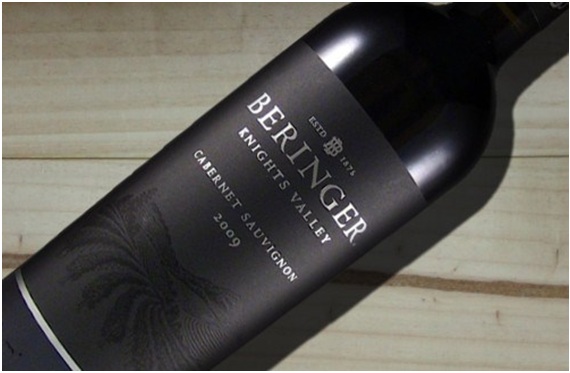There are any number of people out there who buy quite expensive wines – around the $50 mark – but don’t have a wine cellar. In short the vintage when they bought it, is unlikely to mature more than a couple of months, more likely a couple of days. What’s more a huge percentage of these people are fond of big New World reds, of which the sine qua non is big Californian cabernet sauvignon.
[related_content slugs=”the-rise-of-sauvignon-blanc,a-tour-through-the-reds-of-france,for-new-world-drinkers-chilean-cabernet-sauvignon” description=”More from James Romanow” position=”right”]
Regular readers know I’ve more or less abandoned such wines. I prefer a leaner, more elegant style. Don’t get me wrong: Cabernet sauvignon can become as elegant as Burgundy with time. But alas, almost no consumer in the market place will have the necessary decade or two of patience required to achieve this exalted state.
However help is on the horizon, courtesy of Nathan Myhrvold, Mr. Myhrvold is a man of restless intelligence; the ex-Chief Technology Officer of Microsoft, he has been an avid cook, a master French chef (Cordon Bleu I think) and the author of books and articles on cooking and technique. His latest opus, a five volume work on the art and science of cooking every penny, all 62,000 of them, for the serious amateur or professional chef.
Mr. Myhrvold believes that pretty much all wine, including champagne will benefit from 20 seconds or so in the blender. I decided to put his idea to the test with some very well made fat Californian sauvignon.
I agree with Mr. Myhrvold. So much so, that my next dinner guest will watch as I cheerfully run their wine through the blender and thence to the decanter. (I may exempt the under $15 wines to begin with; they aren’t usually as fat. What’s more the blender makes flabby mass market vinification techniques as obvious as if you were wearing x-ray glasses.)
I have some experience with this theory. Back in the days when Ron and I ran a swinging bachelor pad, we were known to aerate cheap wine in the frying pan overnight to make it palatable. So I am less predisposed to crying Quelle horreur! as my premier cru goes into the Osterizer.
The first wine into the whirlpool was Beringer Knight’s Valley. This is always a first rate wine made with great care and attention. The straight up version had a spicy, fruity nose, with a very smooth palate – the French would call it ëonctueuxí – and a nice tannic grip at the edges and finish.
The blenderized version became uncomfortably sweet, rather like a dessert wine. I shouldnít be surprised. As I noted in my Wine of the Year last week, this is where red wines are going. Either get on board or get off the tracks. (Which makes me deeply curious how Apothic would taste after 30 seconds in the blender. Stay tuned for more booze adventures.) At the same time the mineral was more apparent and the slightly herbal aromas more pronounced. My guess is this one needs closer to a minute with the Osterizer set to kill.
St. Clement Oroppas was next into the deep end. A mere 30 seconds turned it into a truly magnificent wine. Fruit and plum and spice on the nose, with a leaner palate. The tannins were fine grained tannins, and there was great minerality and just a touch of acidity. It was the oldest of these wines. I suspect in this class you should assume 15 seconds on puree for every year of age you’d like to add.
Silver Oak Alexander Valley took the next plunge. (If you’re one of the Silver Oak groupies start reading the sub-heading Alexander Valley on the label: they produce endless numbers of vineyards and that great deal you just found may be a completely different wine.) Their wine un-whipped smelled mostly of oak. Once properly pureed the nose was much more mineral, with hints of black olive. It was – dare I write it? – almost achieving elegance.
Joseph Phelps Napa Valley Estate was the last wine I attempted to whip into shape. Unabused, my entire notes on bouquet were alcoholic. A mere 45 seconds in the blender made several flaws (the oak regime) more obvious; but on the other hand, the palate was lighter, the minerals more interesting, and it tasted rather like a second growth Bordeaux from a mediocre year. That sounds damning, but if you offered me a mediocre Pomerol from say 2007, I’d sniff once to show I wasn’t impressed, then suck the bottle down so fast youíd wonder where it went.
For the true cork dorks in the audience I used a Braun blender set to 3. Blending will vary depending on machine and personal taste.
Beringer Knights Valley Cabernet Sauvignon, 2009.$49.98 ****
St. Clement Orroppas Cabernet Sauvignon, 2007. $59.99 *****
Silver Oak Alexander Valley Cabernet Sauvignon, 2008. $60.70 *****
Joseph Phelps Napa Valley Estate Cabernet Sauvignon, 2009. $59.00 ****
—
James Romanow writes about Wine and all things Boozy for the Spectator Tribune. Follow him @drbooze.
